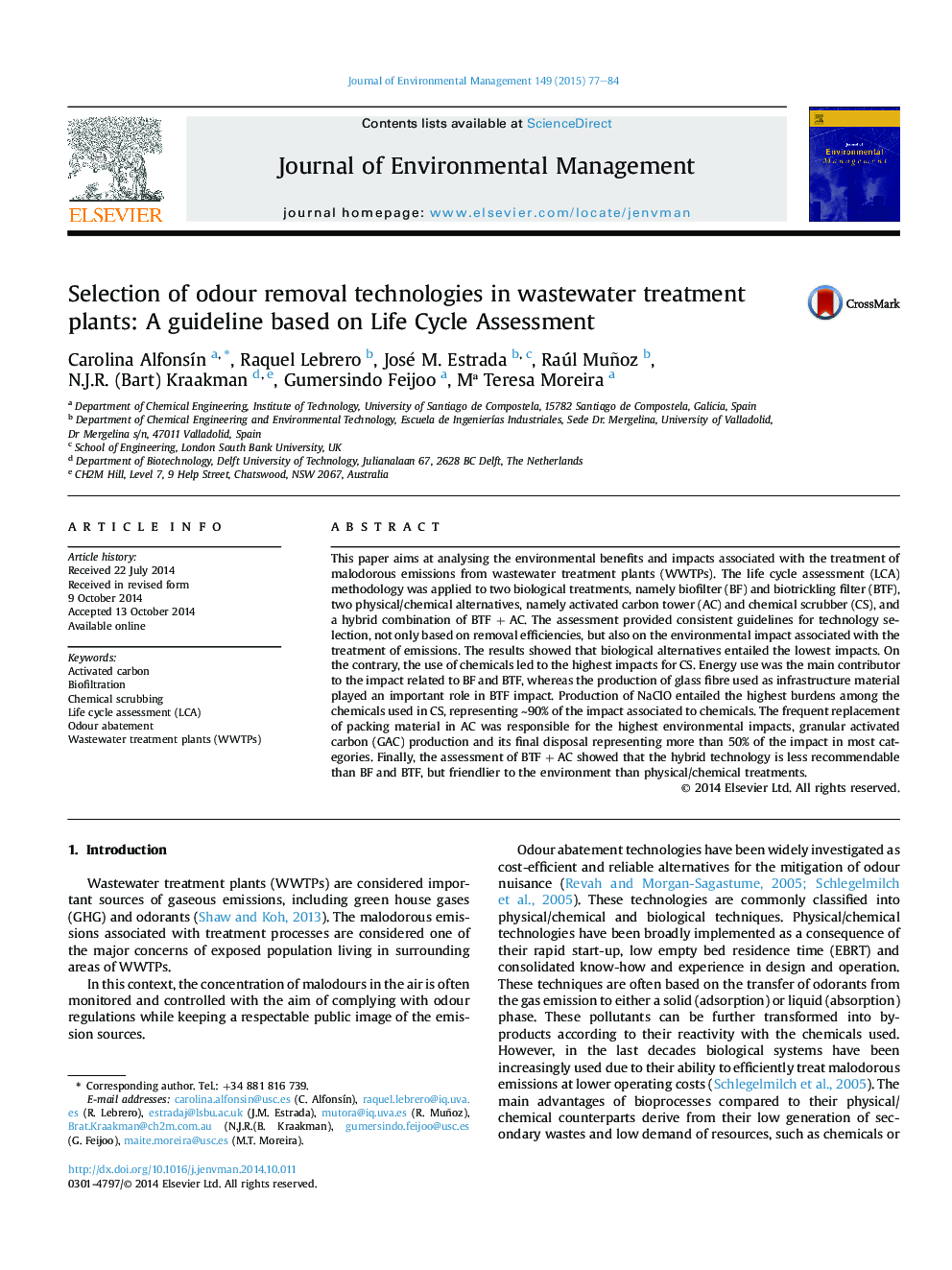| Article ID | Journal | Published Year | Pages | File Type |
|---|---|---|---|---|
| 7483116 | Journal of Environmental Management | 2015 | 8 Pages |
Abstract
This paper aims at analysing the environmental benefits and impacts associated with the treatment of malodorous emissions from wastewater treatment plants (WWTPs). The life cycle assessment (LCA) methodology was applied to two biological treatments, namely biofilter (BF) and biotrickling filter (BTF), two physical/chemical alternatives, namely activated carbon tower (AC) and chemical scrubber (CS), and a hybrid combination of BTFÂ +Â AC. The assessment provided consistent guidelines for technology selection, not only based on removal efficiencies, but also on the environmental impact associated with the treatment of emissions. The results showed that biological alternatives entailed the lowest impacts. On the contrary, the use of chemicals led to the highest impacts for CS. Energy use was the main contributor to the impact related to BF and BTF, whereas the production of glass fibre used as infrastructure material played an important role in BTF impact. Production of NaClO entailed the highest burdens among the chemicals used in CS, representing â¼90% of the impact associated to chemicals. The frequent replacement of packing material in AC was responsible for the highest environmental impacts, granular activated carbon (GAC) production and its final disposal representing more than 50% of the impact in most categories. Finally, the assessment of BTFÂ +Â AC showed that the hybrid technology is less recommendable than BF and BTF, but friendlier to the environment than physical/chemical treatments.
Keywords
Related Topics
Physical Sciences and Engineering
Energy
Renewable Energy, Sustainability and the Environment
Authors
Carolina AlfonsÃn, Raquel Lebrero, José M. Estrada, Raúl Muñoz, N.J.R. (Bart) Kraakman, Gumersindo Feijoo, Mª Teresa Moreira,
